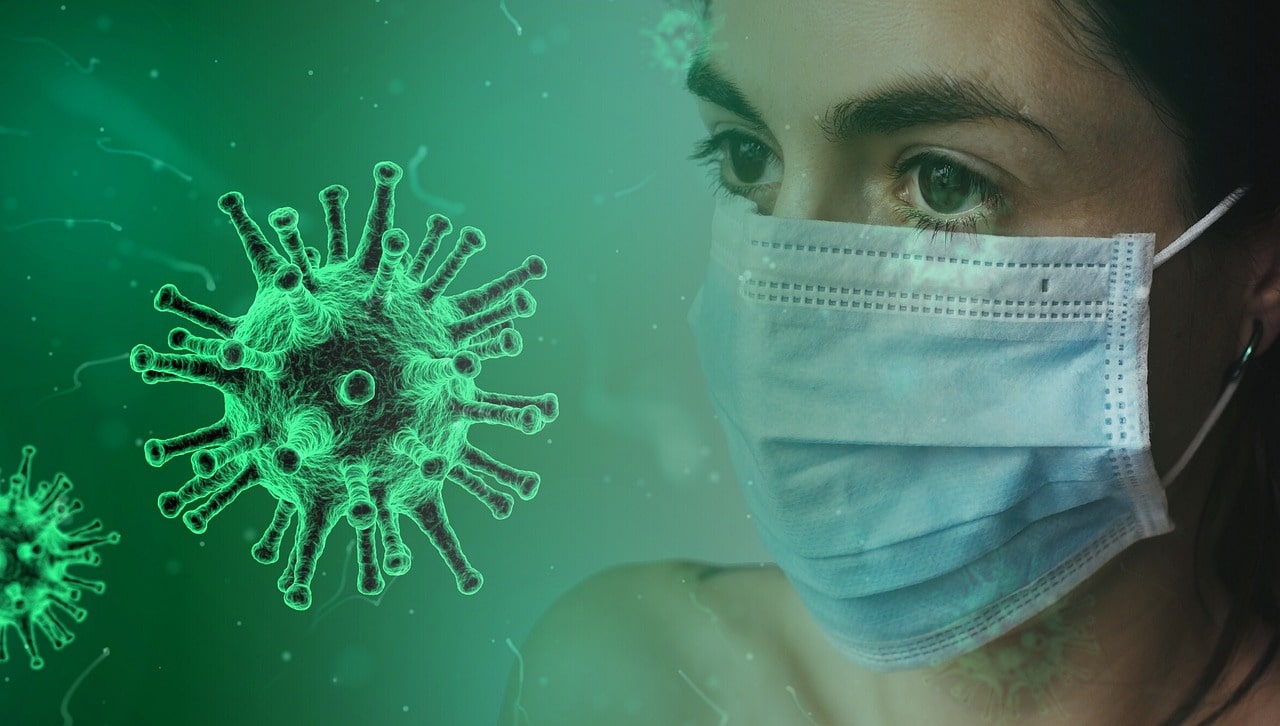In 2020, a tiny virus could bring the entire world to a standstill. A ‘covid positive’ phrase instilled fears in the minds of many. It was all over the headlines and death toll increased with each passing day. Such was the impact of the disease. 3 years later, what is the status of COVID 19? Is it or can it be eradicated? Let’s find out…
What is COVID?
COVID is a viral disease, just like polio and small pox. It cannot be treated, however, it can be controlled with the use of vaccines. Ever since the spread of COVID 19, different strains have been reported in different countries. The first variant (alpha) was reported in china. Variants from alpha variant have been widely reported in the UK, south africa (beta), Brazil (Gamma) and India (Delta). Interestingly, each strain was unique with regard to their patterns, lethality or severity. And each time the strain evolved into a new one, it was more lethal and severe than its previous variant. The key difference between the viral strains was the spike protein. This enabled better transmission of the disease.
Symptoms:
It is a contiguous and deadly viral disorder that mainly affects the respiratory system. Due to this, the most common symptoms include fever, chills and sore throat. And because this is predominantly a respiratory disease, a shortness of breath is a major sign of COVID 19. A characteristic sign of COVID 19 is the loss of taste and smell. While most people can make a full recovery at home, some require hospitalisation especially if their oxygen levels are low (below 90). In addition, the latest variants (omicron BA5) show symptoms like runny nose, dry cough, headaches, muscle ache and fatigue.
The symptoms start 5-6 days after exposure and the symptoms may last from 1-14 days.The diagnostic test for COVID involves a PCR or laboratory based molecular test. It therefore takes a long time to get the results. In addition, rapid antigen tests are available , but they may not be very accurate all the time.
Why is it a pandemic?
When it comes to diseases, three words are often used. Lets see each one of them.
- Endemic: the disease is constantly present in a population, but, it does not spread
- Epidemic: the disease outbreak is restricted to a specific geographical location or population
- Pandemic: the disease outbreak spreading to several countries around the world
COVID 19 appeared without a warning in 2019 and the world was quickly overwhelmed by its rate of spreading and mortality. In fact, thousands of people died across the world and a state of global pandemic was announced. What makes it a global pandemic is the fact that it rapidly spreads among people. It transmits quickly via three different ways: person-person, environment-person and from person-environment. Its super-saturation for hours to days in many different kinds of environments makes it enough for a person to inhale the virus and acquire an infection. Social gestures like sneezing, coughing, handshakes cause the rapid spread of infection.
There is more to this. Most patients are carriers of the virus. That is, they are asymptomatic, but are capable of spreading the infection to another person. This makes it more dangerous and risky. This especially affects immunocompromised people, children and pregnant women.
Lockdown effects on the spread of covid 19:
Unlike other epidemics, the spread of COVID 19 could be limited to an extent by following safety guidelines. So, medical and non medical interventions were put in place such as: the use of face masks, hand sanitation, travel restrictions and social distancing. All these interventions along with the discovery of COVID vaccinations bought hope to the general public. However, the rapid evolution of the virus to a more fit and deadly strain posed a challenge.
Other problems due to lockdown :
In addition to the fast rate of spreading of the disease and health issues relating to COVID 19, the lockdown has also caused a social and economic burden on a massive scale. The rapid rate of mutations will eventually push us towards social distancing and social isolation as our only resort. But, this cannot happen for long. The lockdown and social distancing has implications on social life, commerce and the global economy in general.
Public health emergency:
May 11, 2023 marked the end of public health emergency, as announced by the president of United States. According to the law the president can declare an emergency in response to a disaster or crisis. During this period, certain powers like providing relief to the individuals, state or governments can be carried out. However, when the emergency ends, these powers will be lifted.
However, this does not mean the end or successful eradication of COVID 19. It just means that one can still live with the virus through vaccines and good personal hygiene and maintaining safety measures.
COVID 19: Efforts towards eradication
Eradication of diseases isn’t new, especially through vaccines. A few instances where effective vaccines has helped in the eradication of diseases include smallpox, rinderpest, a few serotypes of polio, measles, mumps and rubella. The next in line is our attempts at eradicating COVID 19 at a global scale.
Public health and social measures (PHSM’s ) have been successful in eliminating COVID 19 in several jurisdictions. Among the countries which have achieved this is china and hong kong with high population densities. But, this has also been done in island nations like Iceland and New Zealand. Could this, combined with safe and effective vaccines help in the global eradication of COVID 19 is still a question to be answered.
In order to test the feasibility of eradication, it needs to be compared to two other endemics which are already eradicated. The feasibility of global eradication of COVID 19 is slightly higher than polio although it is not as high as small pox. The results of the comparison say COVID 19 does fall into the realm of eradication, especially technical feasibility.
What are the main challenges for COVID 19 eradication?
- They mainly include the high coverage of vaccination and the need to continuously update vaccine designs due to a high rate of mutation in the virus. However, there is also an advantage to this that makes COVID 19 eradication feasible and that is the PHSM’s if rightly and successfully implemented can help complement vaccination
- Other challenges include the nature of the virus and vaccine itself. For instance, vaccine acceptance and emergence of stronger variants capable of faster transmission
- Cost: the cost of vaccine development is very high
- Risk of existence of the virus in other non human reservoirs like animals: while the infection in wild animals seems rare, companion animals like dogs and cats do not appear to spread the infection to humans. Moreover, farmed animals can be controlled by quarantine and culling.
OMICRON: the deadly variant of COVID 19
The emergence of a new variant called Omicron has reopened the debate on the feasibility of COVID 19 eradication. It spreads rapidly and has showed an overwhelming rate of morbidity and mortality. Also, the omicron virus has evolved in parallel to the other COVID 19 variants. Most of the mutations in the omicron virus was seen in its spike protein, making it easily transmissible. In fact, it was even found in patients who were vaccinated for COVID 19. Its superiority is casting doubts on the efficacy of these vaccines. However, booster doses developed against the emerging mutant will help prevent the spread of the disease.
Can COVID be eradicated? Three schools of thoughts
Coming to our question: can COVID 19 be eradicated? There are three perspectives to this:
- Eradication is possible, but it will be challenging and time consuming.
- It might resemble the flu and we might have to live with it. It will require efficient monitoring and surveillance to prevent the spread of the infection.
- A yet another school of thought believes that vaccination is the key. The search for a single strong and efficient vaccine must continue, however, it is difficult to predict when a next mutant may arise and how strong it will be
However, the best approach will be combination of medical and non medical interventions that include proper sanitation, hygiene, social distancing and vaccination.
Lessons we can learn from smallpox and polio eradication: three factors are crucial for complete eradication of a disease, namely:
- Availability of a vaccine: there is no doubt in the fact that research on COVID vaccines are underway. However, how efficiently can the vaccine research cope with the rapidly mutating virus is a question. We never know how strong and virulent the next mutant will be
- Availability of simple diagnostic tools with high specificity and sensitivity: there are a lot of rapid and efficient diagnostic tests available, but one needs to ensure their availability globally
- Human-Human transmission: the pathogen should not be able to survive if a human-human transmission chain is broken. The presence of an animal reservoir is a challenge
Final thoughts:
Despite the promising use of vaccines against mutating strains of COVID, the efficacy and dosage needs to be determined on a large scale, which is both costly and time consuming, making this not so practical in reality. Furthermore, an endless cycle of mutant virus can defy all vaccine treatments and social distancing would be the only choice. But, for how long? Despite the challenges and possibilities, there is still a requirement of expert review on the feasibility and durability of COVID 19 eradication. Furthermore, research should be focussed on the use of antiviral drugs combined with improved vaccines. Short time and long time measures should be explored. Latest developments in the field of COVID vaccines look promising, giving us a ray of hope, suggesting that it is not impossible to eradicate the global disease, but, it will take longer time and more effort to get there.
What do you think about this? The pandemic has ended, but, can COVID 19 be eradicated? Comment down below.


Informative article, thanks for sharing.